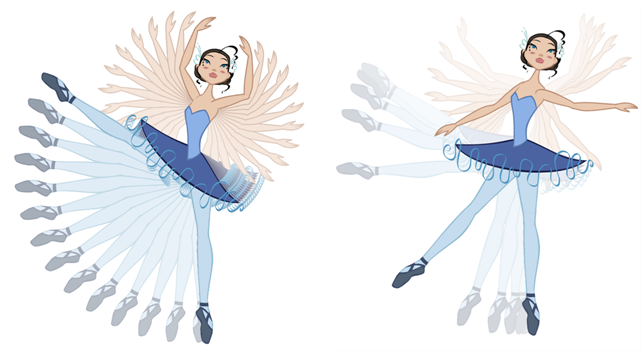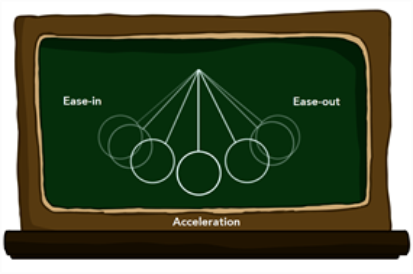- Modules
- Animation Principles
- Slow-in and Slow-out Principle
Slow-in and Slow-out Principle
T-PRIN-004-008
Most characters and objects accelerate and decelerate when moving. Most movements are not linear, therefore to reproduce the slow-in and slow-out effects, we add more drawings closer together at the beginning of the action and same at the end of the movement. The closer the drawings are, the slower the animation will be. The farther apart they are, the faster the animation will be.

Newton's laws of motion apply in the animated world. Basically stated, objects do not move unless acted on by a force strong enough to overcome their inertia. And when they're acted upon by a bigger force, they move or react in an equal and opposite manner.

Acceleration due to gravity is constant. This causes falling objects to gain speed until they're acted upon.
At the top of its arc, a pendulum's velocity is slow. At the bottom, it's high. This kind of speed change is referred to as ease-in and ease-out in animation. Ease-in means that the object is gradually picking up speed; ease-out means that the object is gradually slowing down.
Time Estimated 5 mins
Difficulty Level Beginner
Topics List
- Introduction to Animation Principles
- Squash and Stretch Principle
- Timing Principle
- Anticipation Principle
- Straight Ahead and Pose-to-Pose Principle
- Follow Through Principle
- Arcs of Rotation Principle
- Slow-in and Slow-out Principle
- Secondary Action Principle
- Exaggeration Principle
- Solidity Principle
- Activity 1: Experimenting with Space and Time
- Activity 2: Drawing a Pendulum
- Activity 3: Animating the Playground (Optional)
- Activity 4: Observation and Timing
- Activity 5: Drawing a Bouncing Basket Ball and Bowling Ball
- Activity 6: Animating a Bouncing Ball with a Tail